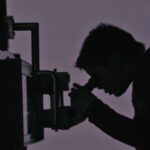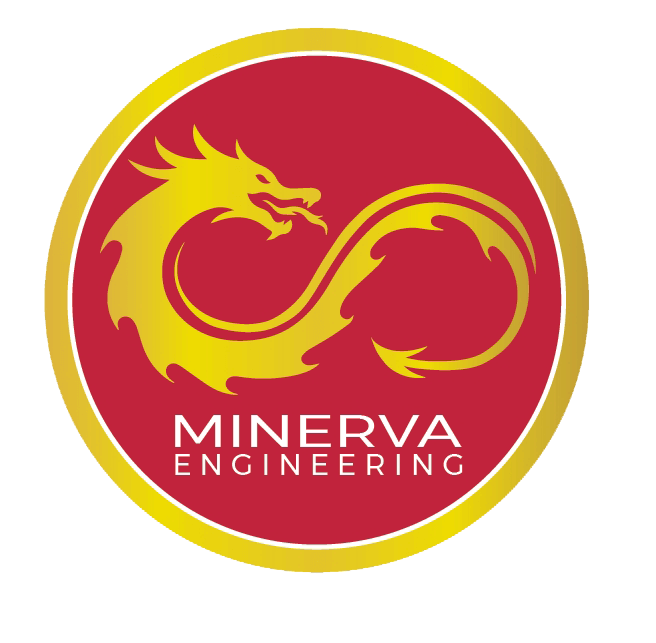Cholesteric-superhelix films represent a class of hierarchically ordered chiral materials capable of sophisticated light manipulation. Their multi-scale helical architectures, derived from the self-assembly of cholesteric liquid crystals, enable functionalities such as selective circular polarization reflection, photonic bandgap formation, and dynamic optical control. To investigate these intricate materials in detail, it is essential to employ characterization techniques that preserve structural integrity while revealing internal chirality. Circularly polarized luminescence (CPL), when generated from aligned upconversion nanorods, offers a robust, non-invasive optical probe to elucidate the internal chiral organization and photonic behavior of such films.
Building Blocks: Cholesteric-Superhelix Films and Upconversion Nanorods
Structural and Functional Basis of Cholesteric-Superhelix Films
Cholesteric liquid crystals exhibit a spontaneous helical organization in which the local molecular director rotates periodically along an axis, with the pitch determining the wavelength of selectively reflected circularly polarized light. By further engineering these systems into higher-order superhelical assemblies, materials with complex and tunable optical responses can be produced. These films exhibit advanced functionalities including multi-wavelength reflection, polarization-dependent transmission, and stimuli-responsive photonic band structures, thereby holding significant promise for photonic and sensing applications.
Upconversion Nanorods as Optical Probes
Upconversion nanorods, typically doped with lanthanide ions such as Er³⁺ or Tm³⁺, exhibit anti-Stokes emission by converting low-energy near-infrared (NIR) excitation into higher-energy visible light. Their anisotropic morphology allows for linearly polarized emission, particularly when aligned along a common axis. When embedded in or positioned adjacent to cholesteric-superhelix films, these nanorods serve as localized emitters of polarized light that interact with the chiral optical environment, thereby facilitating structural interrogation via circularly polarized luminescence.
Challenges in Characterizing Hierarchical Chiral Structures
Analyzing cholesteric-superhelix films poses numerous challenges due to their structural complexity, sensitivity to environmental perturbations, and the presence of nanoscale defects. Conventional optical techniques often lack the resolution or polarization sensitivity required to resolve subtle variations in helical pitch, twist sense, and local order. Importantly, many traditional methods are destructive or perturbative. CPL, in contrast, offers a non-destructive approach that is highly sensitive to chiral optical interactions, enabling the detection of minute structural deviations within these hierarchically ordered systems.
Mechanism of CPL-Based Structural Decoding
Upon NIR excitation, upconversion nanorods emit partially linearly polarized visible light. This emission interacts with the cholesteric-superhelix film, wherein the helicoidal architecture selectively modulates the polarization state, generating CPL. The characteristics of the resulting CPL—namely its handedness, emission wavelength, and intensity—are direct optical signatures of the film’s internal organization. Variations in CPL spectra can be quantitatively correlated with structural parameters such as pitch length, helical sense, and defect density, providing a powerful means for non-invasive chiral characterization.
Advantages of Using Upconversion Nanorods
Upconversion nanorods confer several critical benefits that enhance their suitability for CPL-based analysis of cholesteric-superhelix materials:
-
NIR Excitation with Minimal Background: The use of NIR excitation reduces autofluorescence and background scattering, improving signal clarity.
-
Directional and Polarized Emission: Anisotropic emission enhances interaction with chiral structures and improves sensitivity to helical organization.
-
Spectral Tunability: Emission properties can be engineered via dopant selection to match the photonic stop bands of the film.
-
Non-Invasive Probing: Optical excitation avoids thermal or mechanical disruption of delicate superstructures.
-
Enhanced Signal-to-Noise Ratios: Efficient upconversion emission facilitates the detection of subtle CPL changes, allowing for detailed structural resolution.
Collectively, these attributes make upconversion nanorods a strategic choice for interrogating complex optical materials with high precision.
Technological and Scientific Applications
The ability to decode the internal structure of cholesteric-superhelix films via CPL has broad implications across multiple disciplines:
-
Optical Authentication and Anti-Counterfeiting: CPL signatures provide unique optical identifiers for secure labeling.
-
High-Density Data Storage: Chiral states can encode binary or multi-level information based on polarization states.
-
Display and Photonic Devices: Tunable polarization enhances contrast and efficiency in reflective displays.
-
Sensing and Environmental Monitoring: Structural perturbations induced by external stimuli (e.g., mechanical, thermal, or chemical) can be monitored via CPL shifts.
-
Biomedical Imaging: The combination of NIR excitation and CPL detection enables low-background, high-contrast imaging in biological environments.
These applications underscore the transformative potential of CPL-based probing for both fundamental research and technological innovation.
Empowering Research with Minerva Engineering
Circularly polarized luminescence from upconversion nanorods offers a precise, non-invasive method for decoding the complex structures found in cholesteric-superhelix films. This approach provides a deeper understanding of how chiral materials behave and opens new pathways for innovation across photonics, sensing, and imaging.
Minerva Engineering is proud to support researchers working at the forefront of optical materials science. Our circular dichroism microspectroscopy systems deliver the high-resolution, non-destructive analysis of chiral structures, helping scientists unlock new discoveries in material design and optical performance.
Partner with us now to bring greater clarity and precision to your photonics research.
Conclusion
Circularly polarized luminescence from upconversion nanorods offers a non-invasive, high-resolution approach for unraveling the hierarchical structures of cholesteric-superhelix films. By decoding the optical signatures of these chiral systems, researchers can gain a deeper understanding of their structure–function relationships and exploit these insights for technological advancement. Minerva Engineering remains committed to advancing the field of optical materials research by equipping scientists with the analytical tools necessary to explore and innovate within the domain of chiral photonics.
References
- Abrudan R, Fekete L, Fondell M, et al. Ultra-short helix pitch and spiral ordering in cholesteric liquid crystal revealed by resonant soft X-ray scattering. Soft Matter. 2021;(18):89-96. doi:10.1039/D1SM01543E.
- Honorato-Rios C, Lagerwell J. Interrogating helical nanorod self-assembly with fractionated cellulose nanocrystal suspensions. Communications Materials. 2020;1(69). doi: 10.1038/s43246-020-00069-z.
- Chen G, Chen X, Prasad P, Qiu H, Upconversion Nanoparticles: Design, Nanochemistry, and Applications in Theranostics. Chemical Reviews. 2014;114(10):5161-5214. doi:10.1021/cr400425h.
- Duan P, Han D, Han J, et al. Sequentially amplified circularly polarized ultraviolet luminescence for enantioselective photopolymerization. Nature Communications. 2020;11(5659). doi:10.1038/s41467-020-19479-1.
- Li Y, Liu W, Xu L, Yang Y. Upconversion circularly polarized luminescence of cholesteric liquid crystal polymer networks with NaYF4:Yb,™ UCNPs. Materials Horizons. 2024;(24):6455-6462. doi:10.1039/D4MH00966E.
- Deng J, Wang X, Yang K, Zhao B. Polymeric Cholesteric Superhelix Induced by Chiral Helical Polymer for Achieving Full-Color Circularly Polarized Room-Temperature Phosphorescence with Ultra-High Dissymmetry Factor. Small;20(43):2404576. doi:10.1002/smll.202404576.
- Malkar D, Mur U, Muševič I, et al. Photonic eigenmodes and transmittance of finite-length 1D cholesteric liquid crystal resonators. Scientific Reports. 2023;13 (16868). doi:10.1038/s41598-023-43912-2.


